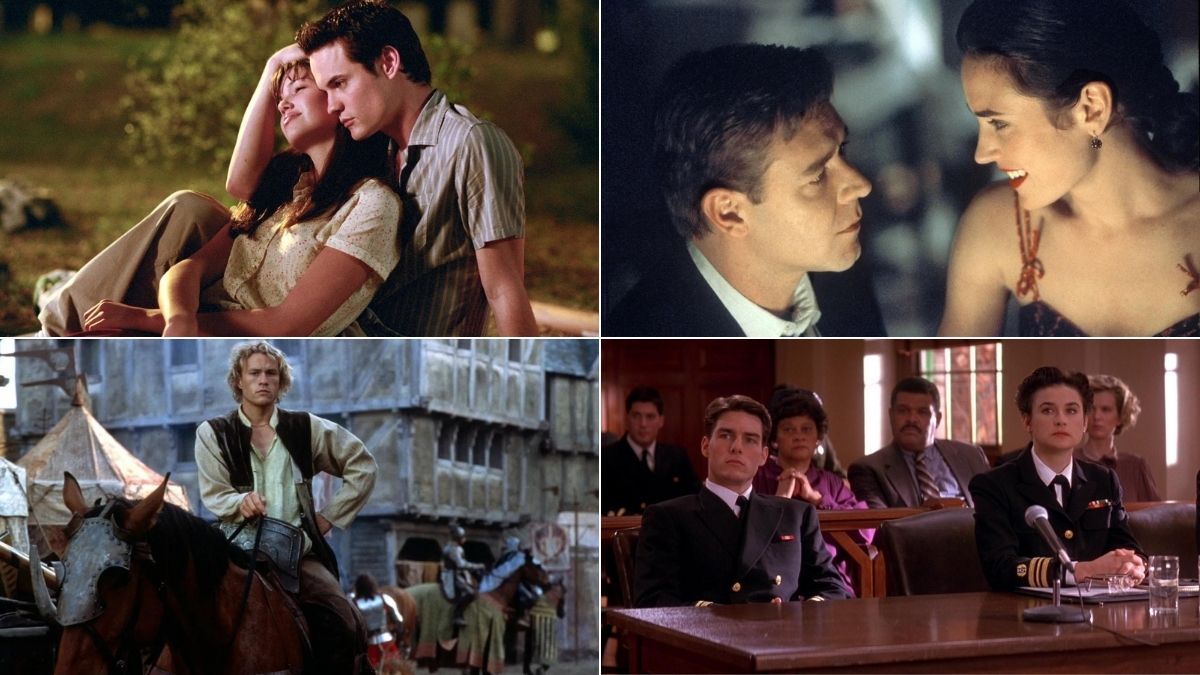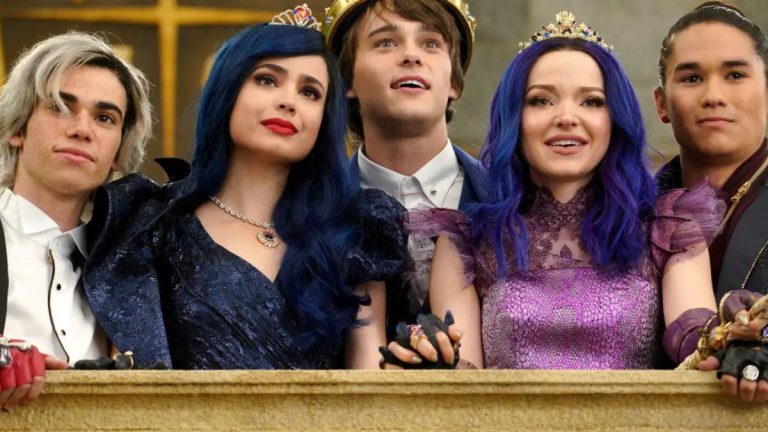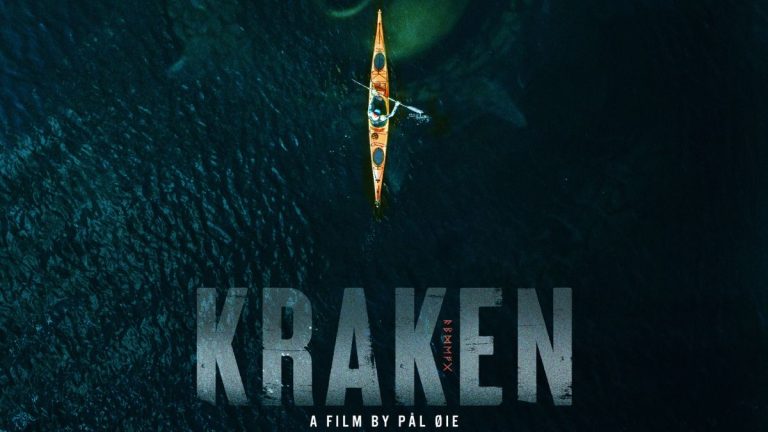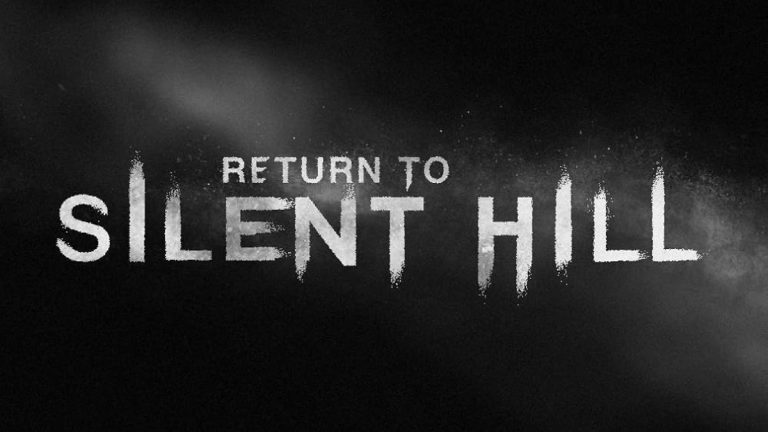Movies That Start With A: Alphabetical Adventures in Cinema

Diving into the world of cinema often feels like an endless exploration through a sea of titles and genres. As we embark on an alphabetical journey, beginning with the letter ‘A’, it’s astonishing to see how many iconic films pop up right from the start. From action-packed adventures to awe-inspiring animations, here’s a list of movies that commence our cinematic expedition with aplomb.
A Beautiful Mind (2001)
“A Beautiful Mind” is a testament to the intricate relationship between genius and madness, telling the real-life story of the brilliant mathematician, John Nash. Directed by Ron Howard, this biographical drama delves deep into Nash’s groundbreaking work in game theory, which earned him the Nobel Prize, and the struggles he faced with schizophrenia that challenged the very core of his existence.
The film, boasting a soul-stirring performance by Russell Crowe as Nash, highlights the perseverance of the human spirit and the steadfast support of the people who stand by us, embodied by Jennifer Connelly’s portrayal of Nash’s devoted wife, Alicia. As much as it is a tale of academic achievement, it is also a poignant narration of love, trust, and resilience against life’s daunting adversities.
The beauty of “A Beautiful Mind” lies not only in its meticulous portrayal of Nash’s intellectual accomplishments but also in its honest depiction of the mental health challenges he faced. It challenges the stereotypical notions of what constitutes a ‘normal’ mind and emphasizes the thin line between genius and insanity.
The film’s evocative narrative, complemented by James Horner’s haunting score, leaves an indelible mark, encouraging viewers to find strength in vulnerability and embrace the imperfections that make us human.
A Clockwork Orange (1971)
Stanley Kubrick’s “A Clockwork Orange” is a disturbing foray into the depths of societal decay and the complexities of free will. Adapted from Anthony Burgess’s novel of the same name, the film delves into the life of Alex DeLarge, a hedonistic young man with a penchant for “ultraviolence” and classical music.
With its iconic use of Beethoven’s symphonies juxtaposed against acts of unspeakable cruelty, the film paints a nightmarish vision of a dystopian future where societal norms have collapsed. Malcolm McDowell’s chilling performance as Alex offers a deeply unsettling yet captivating look at a character who becomes a pawn in a larger experiment on behavioral conditioning.
However, beneath its shocking visuals and disturbing themes, “A Clockwork Orange” poses profound questions about the nature of free will, morality, and the extent to which society can or should control the individual.
The controversial Ludovico technique, which the state employs to ‘cure’ Alex of his violent tendencies, becomes a symbol of the dangers of enforced conformity. By the end, the film challenges viewers to grapple with the disconcerting idea that perhaps the freedom to choose—even to choose evil—is a fundamental human right that should never be tampered with.
A Few Good Men (1992)
“A Few Good Men,” directed by Rob Reiner and penned by the renowned Aaron Sorkin, is a riveting legal drama that delves deep into the heart of military ethics and the sometimes-blurred line between duty and morality. When two U.S. Marines are accused of killing a fellow marine, defense lawyers Lt. Daniel Kaffee (Tom Cruise) and Lt. Cdr. JoAnne Galloway (Demi Moore) are put to the test in a courtroom battle against the very institution they serve. The duo embarks on a quest for truth, confronting the rigid hierarchies and codes of the military.
Central to the film’s tension is the charismatic yet formidable Marine Colonel Nathan R. Jessep, played impeccably by Jack Nicholson. His iconic line, “You can’t handle the truth!”, not only showcases Nicholson’s acting prowess but encapsulates the film’s core dilemma—how subjective truths can be when colored by duty, honor, and loyalty.
“A Few Good Men” is not just a courtroom drama; it’s a philosophical exploration of the cost of principles, the weight of command, and the sometimes tragic outcomes of unquestioned obedience.
A Hard Day’s Night (1964)
At the height of Beatlemania in the 1960s, “A Hard Day’s Night,” directed by Richard Lester, captured the frenetic energy and charm of The Beatles—John Lennon, Paul McCartney, George Harrison, and Ringo Starr—in a mockumentary-style film.
The narrative, though loose, revolves around the band’s escapades over a 36-hour period, showcasing their quirky personalities, humorous antics, and of course, their iconic music. From rabid fan chases to television performances, the film offers a whimsical peek into the lives of the world’s most famous band during their meteoric rise to global stardom.
What makes “A Hard Day’s Night” stand out, aside from its catchy soundtrack, is its pioneering cinematography and genuine portrayal of The Beatles’ camaraderie. The film seamlessly blends the lines between fiction and reality, offering moments of candidness that feel authentic and unscripted. It’s not just a movie for Beatles fans; it’s a cultural artifact that captures the zeitgeist of an era defined by change, youth rebellion, and of course, rock ‘n’ roll.
A Knight’s Tale (2001)
Blending medieval history with modern rock anthems, “A Knight’s Tale” is a playful and entertaining jaunt through the world of jousting tournaments and chivalric codes. Directed by Brian Helgeland, the film follows the journey of William Thatcher, a peasant squire who, after the death of his master, decides to change his stars by posing as a nobleman and competing in jousting tournaments.
Heath Ledger, with his charismatic presence, plays William, showcasing a blend of passion, determination, and a touch of roguish charm. As William takes on the guise of Sir Ulrich von Liechtenstein, he not only battles formidable foes but also societal norms and the very concept of predestined fate.
Beyond its thrilling jousting sequences and anachronistic soundtrack, “A Knight’s Tale” resonates with themes of friendship, love, and the age-old quest to determine one’s destiny. The ensemble cast, including Paul Bettany, Shannyn Sossamon, Mark Addy, and Alan Tudyk, inject humor and heart into the narrative, making it more than just a period action film.
Whether it’s the electrifying lance-on-shield clashes or the foot-tapping dance sequences set to David Bowie’s “Golden Years,” the film is a celebration of dreaming big and, most importantly, having the courage to chase those dreams, irrespective of one’s birthright.
A League of Their Own (1992)
“A League of Their Own,” directed by Penny Marshall, tells the captivating story of the All-American Girls Professional Baseball League (AAGPBL), a women’s baseball league formed during World War II when the majority of able-bodied men were serving overseas. The film beautifully blends humor, drama, and genuine baseball action, spotlighting the struggles and triumphs of these pioneering women.
With an ensemble cast led by Geena Davis, Madonna, Rosie O’Donnell, and Tom Hanks, the narrative captures the spirit, resilience, and camaraderie of the players. Hanks, as the gruff manager Jimmy Dugan, delivers one of cinema’s iconic lines: “There’s no crying in baseball!”, encapsulating the film’s core message about challenging societal expectations and breaking barriers.
Beyond the ball games, “A League of Their Own” delves deep into the personal lives, dreams, and dilemmas of its central characters. The relationship between two sisters, Dottie (Geena Davis) and Kit (Lori Petty), forms the emotional backbone of the film, exploring themes of rivalry, sacrifice, and the intricacies of familial bonds.
Set against the backdrop of a nation at war and a changing societal landscape, the movie is as much about baseball as it is about the empowerment of women, the celebration of sisterhood, and the enduring human spirit that shines brightest during challenging times.
A River Runs Through It (1992)
Robert Redford’s directorial gem, “A River Runs Through It,” is a lyrical and evocative tale of family, love, and the inextricable bond with nature. Adapted from Norman Maclean’s semi-autobiographical novella, the film paints a beautiful portrait of the Maclean family in early 20th-century Montana. At its heart are two brothers, Norman and Paul, played by Craig Sheffer and Brad Pitt, respectively.
Their shared passion for fly fishing in the Montana rivers becomes a powerful metaphor for life, faith, and the intricacies of human relationships. The film’s mesmerizing cinematography captures the raw beauty of Montana’s landscapes, making the river a character in its own right — a force of nature that shapes, challenges, and nurtures the souls of those who venture into its waters.
“A River Runs Through It” is not just a tale of two brothers; it’s a reflection on the ebbs and flows of life itself. The river, with its unpredictable currents and serene stretches, mirrors the unpredictable journey of the Maclean family, marked by joy, sorrow, love, and loss.
The film’s narration, with its poetic and philosophical undertones, underscores the themes of redemption, the complexities of familial ties, and the eternal quest for understanding and grace. In its quiet, contemplative moments, the movie invites viewers to reflect on the profound connections between man, nature, and the divine.
A Streetcar Named Desire (1951)
Elia Kazan’s “A Streetcar Named Desire,” based on Tennessee Williams’ play, is a gritty exploration of human frailty, desire, and the stark realities of urban life. Set in the sultry backdrop of New Orleans, the story follows the tragic descent of Blanche DuBois, a woman with a tarnished past seeking refuge with her sister, Stella, and her brutish husband, Stanley Kowalski.
Vivien Leigh’s portrayal of Blanche is hauntingly evocative, capturing the fragility, delusions, and desperate yearnings of a woman clinging to the vestiges of southern gentility. Opposite her, Marlon Brando’s iconic performance as Stanley Kowalski introduced audiences to a raw, magnetic energy that defined a new era of screen acting.
The oppressive heat of New Orleans, the cramped quarters of Stella and Stanley’s apartment, and the incessant clanging of the streetcar named ‘Desire’ together create an atmosphere charged with tension and inevitability.
The film unravels the complexities of Blanche’s psyche, her troubled history, and her tumultuous relationship with Stanley, culminating in moments of devastating intensity. “A Streetcar Named Desire” is a masterful blend of powerful performances, evocative settings, and a narrative that delves deep into the human soul, laying bare its darkest fears and most fervent desires.
A Walk to Remember (2002)
Based on Nicholas Sparks’ touching novel, “A Walk to Remember” is a heart-wrenching tale of young love, faith, and the transformative power of human connection. Directed by Adam Shankman, the film follows Landon Carter, a rebellious teenager played by Shane West, who, after a prank goes awry, is compelled to participate in community service activities, bringing him into close contact with Jamie Sullivan, the local minister’s daughter portrayed by Mandy Moore.
Jamie, with her quiet strength, deep faith, and unassuming beauty, is a stark contrast to Landon’s world, yet what begins as an unlikely friendship soon blossoms into a profound love story that changes the trajectory of Landon’s life.
“A Walk to Remember” resonates with its portrayal of pure, unconditional love and the sacrifices it demands. As Landon uncovers Jamie’s devastating secret, the narrative becomes a poignant exploration of life, death, and the enduring nature of love. Mandy Moore’s portrayal of Jamie is both endearing and inspirational, capturing the essence of a young woman whose faith in God and in love never wavers, even in the face of insurmountable challenges.
The film, with its tender moments, soulful soundtrack, and powerful performances, leaves a lasting impression, reminding viewers of the fragility of life and the redemptive power of love.
About a Boy (2002)
“About a Boy,” directed by Chris and Paul Weitz, offers a delightful and poignant exploration of unconventional family dynamics, personal growth, and the bonds that define us. Based on Nick Hornby’s novel, the film revolves around the life of Will Freeman (Hugh Grant), a carefree bachelor living off his father’s song royalties, who invents a fictional son to attend single parent support groups and meet women.
His life takes an unexpected turn when he befriends Marcus, a socially awkward 12-year-old boy played by Nicholas Hoult, and his depressive mother, Fiona, portrayed by Toni Collette. Through this unlikely friendship, Will begins a journey of self-discovery and maturity, realizing that there’s more to life than just superficial connections.
“About a Boy” strikes a delicate balance between humor and heart. While it offers plenty of laugh-out-loud moments, especially through Will’s comical attempts at adulting, it doesn’t shy away from addressing serious themes like mental health, loneliness, and the complexities of parenthood.
Hugh Grant delivers one of his finest performances, capturing the nuances of a man caught between his commitment-phobic tendencies and the dawning realization of the joys of genuine human connection. At its core, the film is a testament to the idea that families come in all forms, and it’s the bonds of love and understanding, rather than blood, that truly define us.
Ace Ventura: Pet Detective (1994)
“Ace Ventura: Pet Detective,” directed by Tom Shadyac, exploded onto the cinematic scene in the 1990s, gifting audiences with a zany, outlandish comedy that would go on to become a cult favorite. The story centers around Ace Ventura, an eccentric and flamboyant pet detective with a knack for solving animal-related mysteries, portrayed with unparalleled energy by Jim Carrey.
When Snowflake, the mascot dolphin of the Miami Dolphins, goes missing right before the Super Bowl, Ace is on the case, leading to a whirlwind of slapstick comedy, bizarre antics, and a plot that’s as unpredictable as its protagonist. Carrey’s rubber-faced expressions, catchphrases, and unique physical comedy set the tone for this wild ride, establishing him as a major comedy star.
Underlying the hilarity of “Ace Ventura: Pet Detective” is a subtle commentary on the way society views and treats animals. Amid the comedic chaos, the film touches on themes of animal rights, conservation, and the lengths to which individuals will go to protect and rescue animals.
Carrey’s portrayal of Ace as an unwavering advocate for animals, even in the face of danger and ridicule, adds a layer of depth to the narrative, suggesting that underneath the laughs, there’s a genuine heart and message about the importance of compassion and understanding towards all living beings.
Across the Universe (2007)
Directed by Julie Taymor, “Across the Universe” is a visual and auditory feast that brings the timeless songs of The Beatles to life through a tapestry of love, war, and the cultural revolution of the 1960s. The film weaves a narrative around Jude (Jim Sturgess) and Lucy (Evan Rachel Wood), two star-crossed lovers whose relationship unfolds against the backdrop of the tumultuous events of the era.
Through beautifully choreographed numbers and surreal sequences, the songs of The Beatles are reimagined, giving them new context and meaning. From the psychedelic adventures in “I Am the Walrus” to the heartfelt rendition of “Let It Be” during the Detroit riots, every song serves as a narrative pillar, driving the story forward.
“Across the Universe” stands out not just for its imaginative use of music but also for its poignant commentary on the political and social upheavals of the ’60s. Themes of anti-war activism, civil rights, and the quest for individual freedom resonate powerfully, reflecting the hopes, dreams, and struggles of a generation.
The film becomes both a tribute to The Beatles’ enduring legacy and a reflection on the universal themes of love, loss, and resistance that continue to be relevant in every era.
Adam’s Rib (1949)
One of the most celebrated screwball comedies of its time, “Adam’s Rib,” directed by George Cukor, delves into the battle of the sexes with wit, charm, and incisive commentary. Starring the dynamic duo of Katharine Hepburn and Spencer Tracy, the film revolves around a husband-and-wife legal team who find themselves on opposing sides of a sensational court case.
As Amanda Bonner (Hepburn) defends a woman accused of shooting her unfaithful husband, while Adam Bonner (Tracy) prosecutes, the courtroom becomes a battleground for larger debates about gender roles, equality, and societal expectations.
The chemistry between Hepburn and Tracy, both on and off the screen, is palpable, and their sharp, rapid-fire exchanges form the comedic heart of the film. However, beneath the humor, “Adam’s Rib” raises thought-provoking questions about the double standards that women face in society and within the justice system.
At a time when gender norms were rigidly defined, the film challenged audiences to reconsider their preconceptions, making it not just an entertaining romp but also a progressive and timely piece of cinema.
Adaptation (2002)
From the imaginative minds of director Spike Jonze and screenwriter Charlie Kaufman, “Adaptation” is a meta-cinematic exploration of the struggles of creativity, identity, and the blurring lines between fiction and reality. The film stars Nicolas Cage in a dual role as both Charlie Kaufman, the real-life screenwriter, and his fictional twin brother, Donald.
As Charlie grapples with adapting Susan Orlean’s non-fiction book “The Orchid Thief” into a screenplay, the narrative spirals into a surreal blend of fact, fiction, and existential angst. Cage’s portrayal of the insecure, neurotic Charlie juxtaposed against his confident, cliché-loving twin is both humorous and deeply introspective.
“Adaptation” is more than just a film about writing a screenplay; it’s a meditation on the nature of art, the pursuit of passion, and the inherent challenges of translating life and its complexities onto the screen.
The narrative is layered, often blurring the lines between the events of Orlean’s book, Charlie’s struggles with the adaptation, and the increasingly bizarre fictional world that the film constructs. It’s a testament to Jonze and Kaufman’s genius that “Adaptation” remains coherent, engaging, and thought-provoking, even as it defies traditional storytelling conventions.
After Hours (1985)
Martin Scorsese’s “After Hours” is a darkly comedic odyssey through the surreal, nocturnal world of New York City. The film follows Paul Hackett, played by Griffin Dunne, as a mild-mannered word processor whose quest for a late-night romantic rendezvous turns into a Kafkaesque nightmare of bizarre events, misunderstandings, and increasingly dire situations.
As Paul navigates the labyrinthine streets of SoHo, he encounters a series of eccentric characters, each contributing to his mounting desperation to simply get back home. The film is a masterclass in tension and pacing, as Scorsese expertly transforms the familiar cityscape into a landscape of the absurd.
Beyond its comedic surface, “After Hours” offers a probing examination of urban alienation and the unpredictability of life. Paul’s misadventures highlight the thin line between the mundane and the chaotic, suggesting that the veneer of normalcy can be shattered in an instant.
The film’s claustrophobic atmosphere, combined with its sharp, witty script, makes “After Hours” a unique and unforgettable entry in Scorsese’s illustrious filmography. It serves as a reminder of the unpredictability of life and the unexpected twists and turns that can transform an ordinary night into an unforgettable adventure.
Aguirre, the Wrath of God (1972)
Werner Herzog’s “Aguirre, the Wrath of God” is a cinematic journey into the heart of darkness, a haunting exploration of obsession, ambition, and the treacherous allure of power. The film follows the doomed expedition of Spanish conquistadors as they traverse the unforgiving Amazon rainforest in search of the legendary city of gold, El Dorado.
At the helm is the mad, power-hungry Aguirre, portrayed with chilling intensity by Klaus Kinski. As the jungle’s oppressive environment and Aguirre’s increasingly unstable leadership take their toll, the expedition spirals into chaos, mirroring the descent into madness of its protagonist.
Herzog’s decision to film on location in the perilous Amazonian landscapes adds an undeniable authenticity, with the imposing wilderness becoming a character in its own right.
The genius of “Aguirre, the Wrath of God” lies not just in its narrative but in its ability to evoke a profound sense of unease and existential dread. Through long, lingering shots and a minimalist soundtrack, Herzog crafts a suffocating atmosphere that amplifies the film’s themes of human hubris and the inevitable futility of trying to conquer nature.
The cinematography, characterized by its use of natural light and immersive panoramic shots, juxtaposes the breathtaking beauty of the Amazon with the dark, destructive nature of man. In Aguirre, Herzog presents a chilling portrayal of the corrupting influence of unchecked ambition and the lengths to which one will go to attain power.
Airplane! (1980)
“Airplane!” is a comedic masterpiece that gleefully subverts the disaster movie genre with its irreverent humor, rapid-fire gags, and memorable one-liners. Directed by Jim Abrahams and the Zucker brothers, this satirical romp tells the story of a traumatized former fighter pilot, Ted Striker, who must overcome his fear of flying to save a plane full of passengers when the crew falls ill.
But beyond its straightforward premise lies a whirlwind of slapstick comedy, puns, visual gags, and absurd situations, all delivered with deadpan seriousness. The ensemble cast, including Leslie Nielsen, Robert Hays, and Julie Hagerty, play their roles with such earnestness that it heightens the film’s comedic effect.
While “Airplane!” is undeniably hilarious, its genius lies in its ability to be both a parody and a love letter to the disaster films of the 1970s. The filmmakers took inspiration from the serious drama “Zero Hour!” (1957) and infused it with their unique comedic sensibilities, creating a film that’s both a critique and a celebration of its source material.
The result is a movie that stands the test of time, transcending generational boundaries with its universal appeal. “Airplane!” is not just a comedy; it’s a cultural touchstone that has left an indelible mark on the world of film, inspiring countless imitators but never truly being replicated.
Akira (1988)
“Akira,” directed by Katsuhiro Otomo, is a groundbreaking anime film that has left an indelible mark on the world of animation and cinema at large. Based on Otomo’s manga of the same name, the film is set in a post-apocalyptic Tokyo, now known as Neo-Tokyo, where societal decay, gang violence, and governmental oppression run rampant.
Amid this chaos, a biker gang member, Kaneda, becomes embroiled in a government conspiracy when his friend Tetsuo gains telekinetic abilities following a motorcycle accident. As Tetsuo’s powers grow uncontrollably, threatening the entire city, Kaneda must confront his friend and the ghosts of the past. The film’s stunningly detailed animation, combined with its intricate storyline, delivers a visceral and immersive viewing experience.
Beyond its visual mastery, “Akira” delves deep into themes of power, corruption, and the quest for identity in a rapidly changing world. It’s a reflection on the consequences of unchecked technological advancement and the inherent human desire for control.
Otomo’s vision of a dystopian future serves as a cautionary tale, highlighting the fragility of society and the potential dangers of sacrificing humanity for progress. With its combination of thought-provoking narrative, iconic imagery, and groundbreaking animation techniques, “Akira” has not only set the standard for anime films but has also influenced a generation of filmmakers and artists worldwide.
Aladdin (1992)
Disney’s “Aladdin,” directed by Ron Clements and John Musker, is a magical tale that has enchanted audiences for decades. Set in the fictional city of Agrabah, the film follows Aladdin, a street-smart “diamond in the rough,” as he discovers a magical lamp housing the larger-than-life Genie, voiced by the incomparable Robin Williams.
As Aladdin navigates the challenges of love, identity, and villainous threats, the film serves up a perfect blend of romance, adventure, and humor. With its memorable characters, including the feisty Princess Jasmine and the nefarious Jafar, and its iconic soundtrack featuring classics like “A Whole New World” and “Friend Like Me,” “Aladdin” remains a cornerstone of Disney’s Renaissance era.
At the heart of “Aladdin” is a universal story of self-discovery and the importance of being true to oneself. Through Aladdin’s journey, the film conveys the message that true worth is determined by one’s character and not by outward appearances or material possessions.
Robin Williams’ performance as the Genie, with his rapid-fire impressions and boundless energy, adds a unique comedic flavor, making the character one of Disney’s most beloved. Coupled with the film’s stunning animation, rich cultural tapestry, and heartwarming narrative, “Aladdin” continues to resonate with audiences young and old, showcasing Disney’s unparalleled ability to craft timeless tales.
Almost Famous (2000)
Cameron Crowe’s semi-autobiographical “Almost Famous” is a nostalgic ode to the golden age of rock ‘n’ roll and the transformative power of music. Set in the early 1970s, the film chronicles the coming-of-age journey of 15-year-old William Miller, an aspiring journalist who lands a dream assignment from Rolling Stone magazine to cover the up-and-coming band Stillwater.
As William embarks on a whirlwind tour with the band, he navigates the heady world of rock music, encountering groupies, egos, and the complexities of adulthood. With a stellar cast that includes Patrick Fugit, Kate Hudson, and Billy Crudup, “Almost Famous” paints a vivid portrait of a bygone era, capturing the spirit, passion, and tumultuousness of the rock scene.
“Almost Famous” stands out not just for its evocative depiction of the ’70s music landscape but also for its poignant exploration of human connections. Through William’s interactions with the enigmatic Penny Lane, the passionate guitarist Russell Hammond, and his overprotective mother, the film delves deep into themes of love, ambition, and the search for one’s place in the world.
The soundtrack, peppered with iconic rock classics, serves as the heartbeat of the film, encapsulating the raw emotion and energy of the era. Crowe’s personal experiences as a young journalist for Rolling Stone lend an authenticity to the narrative, making “Almost Famous” a heartfelt tribute to the music and moments that define our lives.
MORE FROM VOICE FILM






